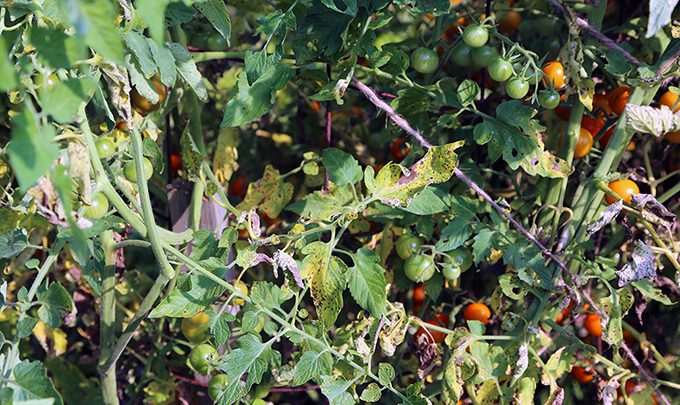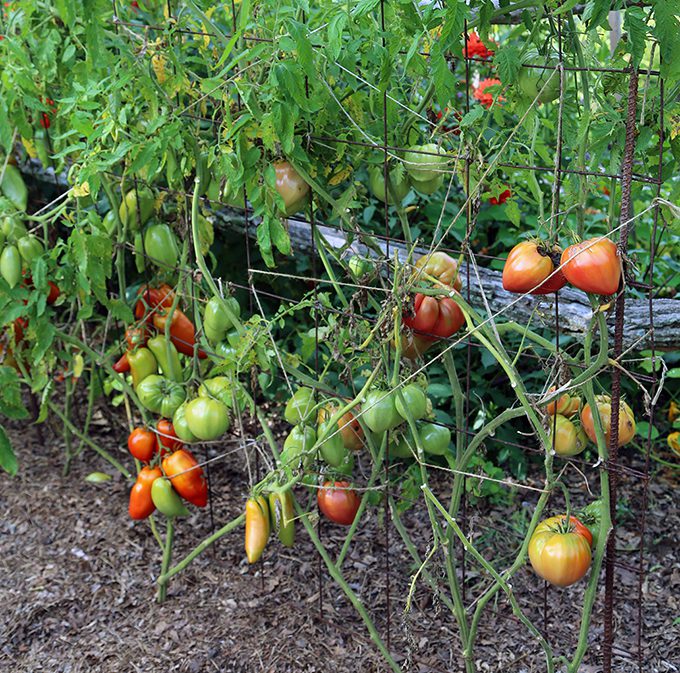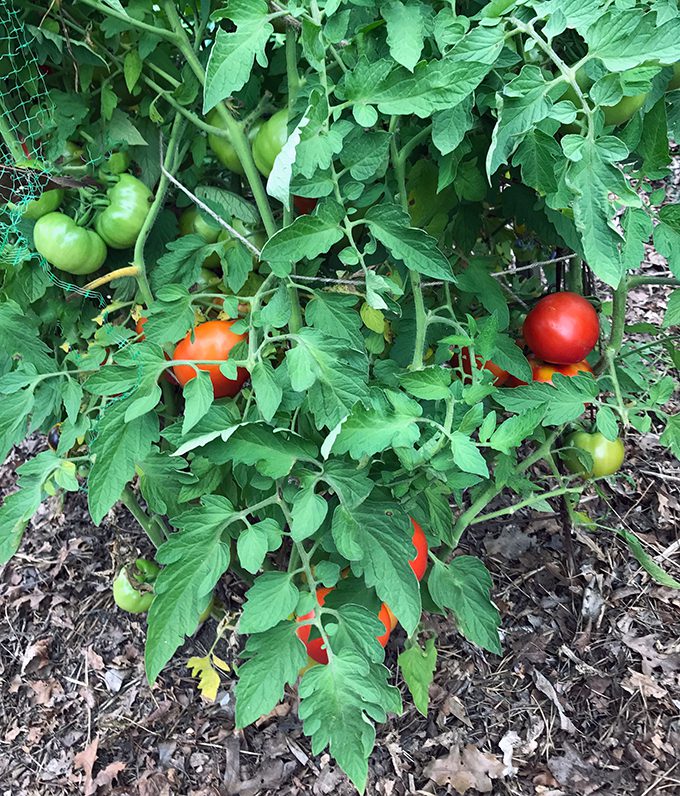Growing Healthy Tomatoes on Cape Cod
Growing Healthy Tomatoes on Cape Cod
If you grow any vegetables at all, chances are that you want to raise a couple tomatoes. Since the flavor of a homegrown tomato far surpasses the store bought fruit, many choose to devote a sunny space to this plant. But raising great tomatoes can be challenging on Cape Cod, primarily due to early blight.
Early blight is a fungus that turns tomato leaves yellow with black spots. It happens from the ground up, and often appears in mid-summmer. When left untreated early blight can kill a tomato plant within a few weeks. Although it’s impossible to get rid of early blight completely, it is possible to use strategies that will control the fungus well into fall so that tomatoes can be harvested through September. Here are the steps for success:
1. Plant several types of tomatoes, including some hybrids. Although heirloom tomatoes are prized for great flavor, they are usually not very disease resistant. Look for Mountain Magic and Oh Happy Day, two varieties that are quite resistant to early blight.
2. When you plant tomatoes, remove the lower leaves so that only the stem touches the soil. Immediately after planting, mulch around the tomatoes with the mulch of your choice so that blight spores don’t have an easy time splashing onto the plants.
3. Spray your tomatoes frequently with one of the organic fungicides, coating the stem and under the leaves. Start this before the plant shows any sign of blight.
4. If you see any spotted leaves near the base of the plant, remove them immediately and throw away.

This is how early blight looks when it starts to infect a tomato plant. Notice the spots on the leaves that are turning yellow.

This plant has early blight but the infected leaves have been removed to help control the spread. The plants are also being sprayed with Serenade or Revitilize frequently.

This is Oh Happy Day – still green and healthy when other heirloom plants around it are showing signs of blight.
Many people ask if there is something that they can “treat the soil with” to kill off the blight. Although you can try using one of the bacterial soil treatments, using any other fungicide would kill off the beneficial fungi in the soil along with the blight. And since the spores of these fungi (Alternaria tomatophila or Alternaria solani) can be spread by wind, animals and people, killing it off in one little patch of soil doesn’t solve the problem.
Others wonder about the “solarization”of the soil that they read about online. This involves spreading clear plastic over the ground and allowing the heat of the sun to bake the soil underneath. Again, that might kill off the blight fungi but it also kills the beneficial fungi and again, doesn’t prevent infection from wind-blown spores. Solarization is also less effective on Cape Cod because our summers can be cooler and often the ground doesn’t heat enough to get rid of the problems.
In addition to the steps above, fertilize your tomatoes regularly and provide good supports to keep them off the ground. Water deeply using a soaker hose or sprinkler (hand watering isn’t enough for deep root systems), watering in the morning so that the foliage can dry out quickly. Plant your tomato plants about three feet apart to allow for good air circulation.
We have an informational handout that addresses other tomato problems. Click here to print it out.
Subscribe To Our Newsletter
Sign up for our weekly email about sales and events.
